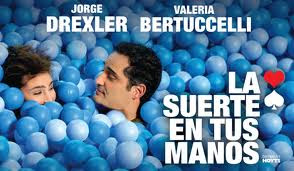 Por Jaime Perales Contreras
Por Jaime Perales Contreras
En su prólogo a S is for Space Ray Douglas Bradbury escribió lo siguiente:”Julio Verne fue mi padre. H. G.Wells fue mi tío sabio. Edgar Allan Poe era el primo con alas de murciélago que guardábamos en lo alto del desván. Flash Gordon y Buck Rogers fueron mis hermanos y amigos. Ahí tienen mi linaje. Añadiendo, por supuesto, el hecho de que muy probablemente, Mary Wollstonecraft Shelley, la autora de Frankenstein, era mi madre” Con esta célebre genealogía literaria, el escritor de ciencia ficción, nació en Waukegan, Illinois, Estados Unidos. A la temprana edad de 12 años, pidió una máquina de escribir de juguete para Navidad: “En esa máquina destartalada escribí mis primeros episodios imitando John Carter, jefe de los guerreros de Marte, y episodios enteros de Chandú el Mago, de memoria”. Precisamente su primer intento narrativo infantil, una secuela de una historia de Edgard Rice Burroughs, la escribió, “porque no tenía dinero para comprar el volumen de la serie”.
Durante su juventud, Ray Bradbury se ejercitó en el oficio de escritor.–teatro, cuentos y una novela-. Bradbury comentó que de 1938 a 1941, taladró millones de palabras, las cuales discretamente las incineró en el olvido.
No sería sino hasta su cumpleaños número 21, cuando publicó su primer cuento en una revista de ciencia ficción. En los años subsecuentes, Bradbury escribió innumerables historias para diversas revistas de ciencia ficción, así como publicaciones “serias” de la talla de The New Yorker, Harper’s, Saturday Evening Post, Colliers, The American Mercury, Charm, Mademoiselle y Playboy, entre muchas otras.
En 1947, su historia Homecoming, fue incluída en la selección oficial para el prestigiado premio literario O’Henry. El crítico Herschel Brickel afirmó del cuento que sin temor a “ruborizarse, en la comparación con los clásicos del período de la breve narrativa de Estados Unidos, su prosa invoca a Irving, Poe y Hawthorne”. Un año después, su ficción Powerhouse ganó el tercer lugar del O’ Henry.
Su primer libro de cuentos Dark Carnival (1949) (La feria de las tinieblas), un curioso y delgado libro, cuyas narraciones se centran en un oscuro circo en donde lo más inesperado puede ocurrir, fue inmediatamente vitoreado por los críticos ingleses y norteamericanos como un clásico.
De Bradbury, probablemente uno de sus libros más famosos, Crónicas marcianas (1950) fue, al parecer, uno de los que le dio más trabajo para ser publicado. Fue rechazado por varias editoriales debido, sobre todo, a su curiosa y peculiar estructura narrativa. El volumen es una serie de cuentos que se relacionan entre sí, lo que nos da una sospechosa y falsa idea de haber leído una novela. Doubleday, el primer editor del volumen, se percató de esta particularidad y aceptó publicarlo, con la condición de que se titulara precisamente Crónicas marcianas.
Bradbury, en una entrevista para The Paris Review, confesó que fue el único cambio que le hizo el editor y la idea, como se puede comprobar, a través del tiempo, fue acertada.A cinco años de que se publicó en lengua inglesa, Jorge Luis Borges escribió el prólogo para la traducción en español de Crónicas Marcianas. La inusual y curiosa manera de juzgar a sus libros preferidos, le dio al texto de Bradbury la calificación de sobresaliente por parte del escritor argentino. Lo comparó con uno de sus autores predilectos H.G Wells, quien lo descubrió a los 10 años: “Hacia 1909 leí, con fascinada angustia, en el crepúsculo de una casa grande que ya no existe, Los primeros hombres de la luna de Wells. Por cierta virtud de estas Crónicas, de concepción y ejecución muy diversa, me ha sido dado revivir, en los últimos días del otoño de 1954, aquellos deleitables terrores”.
Bradbury fue diletante de la cultura latinoamericana (escribió varias historias de tema mexicano, entre las cuales destaca una sobre las momias de Guanajuato); la colonización del planeta rojo, descrita en las Crónicas marcianas, nos da en ocasiones la idea de estar leyendo el salvaje y nostálgico choque de culturas de la conquista de México.
Varias de las historias de Ray Bradbury fueron llevadas a la pantalla con favorable éxito comercial En 1953, por ejemplo, su historia The Fog Horn, se tradujo con el nombre de The Beast from 20,000 Fathoms (El monstruo de las 20,000 leguas). La anécdota: Una bestia prehistórica es encontrada en la Antártida y revivida por una serie de pruebas atómicas, lo que hace que se convierta en una devastadora amenaza para la humanidad. --Dos años más tarde, el director japonés Ishiro Honda, traería a la pantalla a un conocido monstruo de manera muy similar a la de Bradbury, con el nombre de Godzilla (1955)--. The Beast from 20,000 Fathoms, aportó, para esa época, una sustancial ganancia de 5 millones de dólares, debido en parte, a los modestos y económicos efectos especiales, sin carecer, por ello de calidad, producidos por Ray Harryhausen y sus extraordinarias miniaturas. También, en el mismo año, se realizó la película tipo B titulada It Came from Other Space, basada en el cuento de Bradbury The Atomic Monster, Asimismo, Ray Bradbury escribió el guión para la versión de John Huston de Moby Dick (1956), la famosa novela escrita por Herman Melville, protagonizada por Gregory Peck, como el amargado capitán Ahab.
Ray Bradbury colaboró en diversas ocasiones para la radio y la televisión norteamericana. Escribió, además, varios guiones para el programa de Rod Serling, Dimensión desconocida. Y, a su vez, Serling plagió en más de una ocasión las historias de Bradbury para su inmortal serie de ciencia ficción, lo que provocó severas reprimendas por parte del escritor norteamericano. Serling siempre se disculpó por haberlo hecho de manera completamente accidental. La dimensión desconocida, por su parte, como un homenaje, emitió en su capítulo número 100, la adaptación de su cuento de título whitmanesco I Sing the Body Electric.
Una de sus novelas más populares, Fahrenheit 451 (1953), fue adaptada al cine por el director francés. Francois Trufant. El libro abre sus primeras páginas con la leyenda: “Fahrenheit 451: la temperatura a la que el papel de los libros se inflama y arde”. La novela describe a una cruel sociedad del futuro en el que poseer y leer libros equivale a un crimen imperdonable. En la novela existe una especie de bomberos policiales que se dedican a quemar los hogares en donde hay libros. La única manera de salvar al mundo, es aprender de memoria las obras de manera literal, punto por punto, coma por coma. Así que, en la novela, se genera una sociedad clandestina que se dedica a memorizar los libros más importantes de la cultura occidental. Las personas, por lo tanto, se convierten en libros vivientes. Alberto Manguel, en su A History of Reading, cuenta la historia de un hombre asesinado en Sachsenhausen, que era un famoso académico que se sabía de memoria muchos de los clásicos, y que, durante el tiempo que pasó en los campos de concentración, se había ofrecido como biblioteca viviente para sus compañeros de cautiverio. Manguel comentó: “Me imaginé al anciano en aquel lugar lóbrego e implacable, donde no había esperanza, al que alguien se le acercaba para solicitarle un texto de Virgilio o Eurípides y que se abría en una página determinada para recitar palabras antiguas a sus lectores sin libros. Años más tarde, comprendí que Bradbury lo había inmortalizado como uno de los miembros de esa multitud que guardan libros en su mente en Fahrenheit 451” La novela de Bradbury, como se puede observar, es una alegoría de las sociedades totalitarias, comparable a 1984 de George Orwell.
En la década de los sesenta también se adaptó al cine la tercer de sus novelas más famosas titulada El hombre ilustrado (1951), la cual narra un misterioso y solitario personaje que se encuentra completamente tatuado. Aquel que ve los tatuajes del hombre ilustrado ve también su futuro. La gente lo odia porque a través de sus imágenes, cifradas en su cuerpo, contempla exactamente la manera en que morirá. El hombre ilustrado fue protagonizada por Rod Steiger, el actor que interpretó al infame Al Capone y que ganó el Oscar por su actuación del teniente de policía racista en la película Al calor de la noche.
Durante la década de los ochenta, Bradbury tuvo su propia serie de televisión, The Ray Bradbury Theatre en el que cada semana se presentaba un capítulo basado en uno de sus innumerables cuentos y novelas. El programa de televisión, aunque tuvo una audiencia disciplinada y fiel que veía el programa cada viernes, probablemente, prefería deleitarse con la prosa esmerada del narrador norteamericano.
Ray Bradbury jamás dejó de escribir. “Mi entusiasmo me sostuvo bien a través de los años: nunca me he cansado de los cohetes y las estrellas. Nunca he dejado de disfrutar la honesta diversión de morirme de miedo con algunas de mis narraciones más misteriosas y oscuras”. De hecho, una semana antes de su muerte a los 91 años, la revista The New Yorker publicó una colaboración autobiográfica de su vida como escritor en un número especial dedicado a la ciencia ficción.
Bradbury escribió 27 novelas y más de 600 cuentos. Sus libros vendieron más de 8 millones de copias y fue traducido a 38 idiomas.




+&+Octavio+Moreno+(Laurentino)+Photo+credit+Felix+Sanchez).JPG)













+&+Octavio+Moreno+(Laurentino)+Photo+credit+Felix+Sanchez).JPG)



